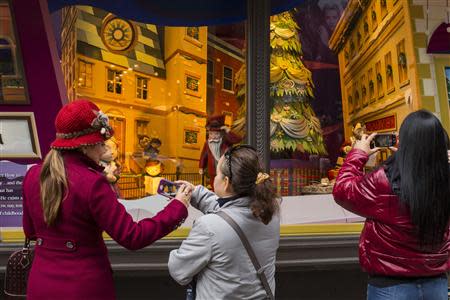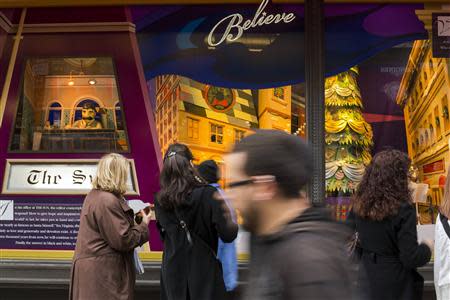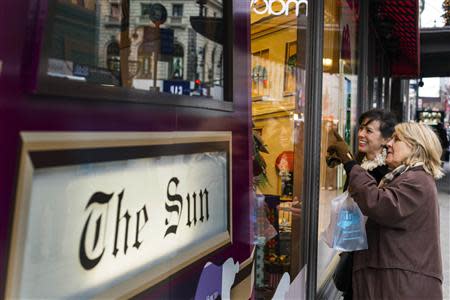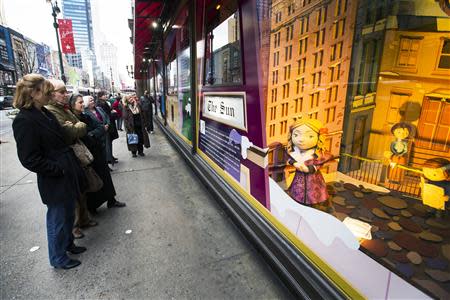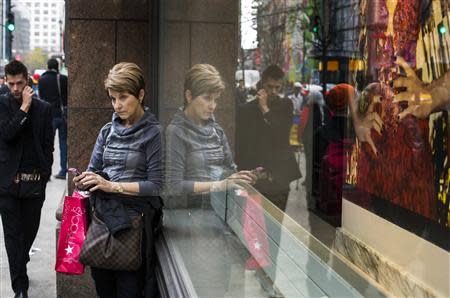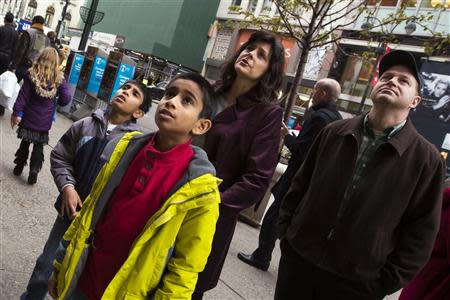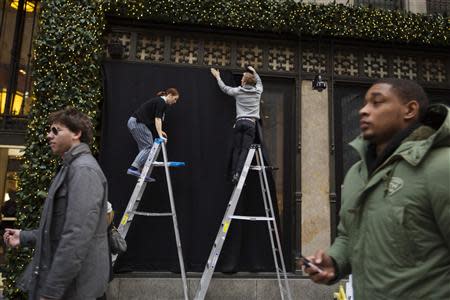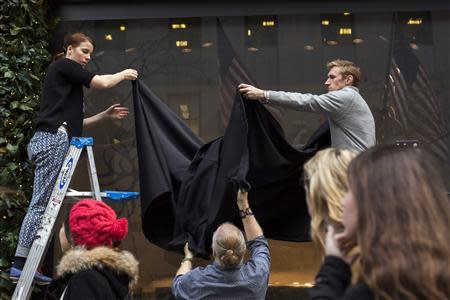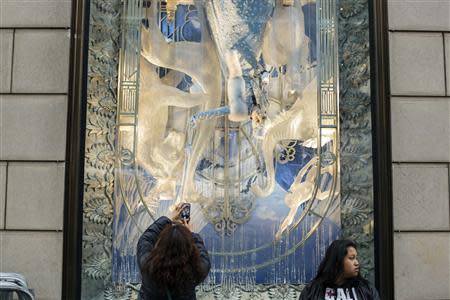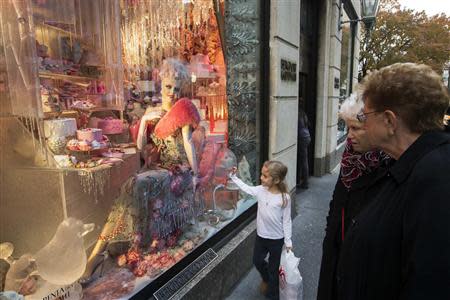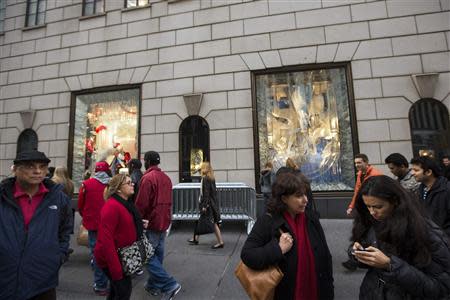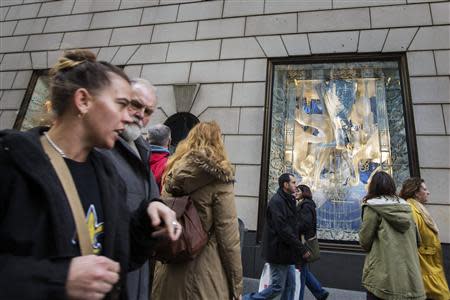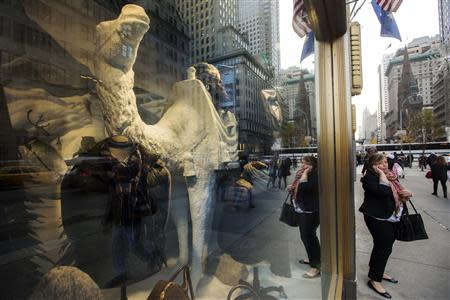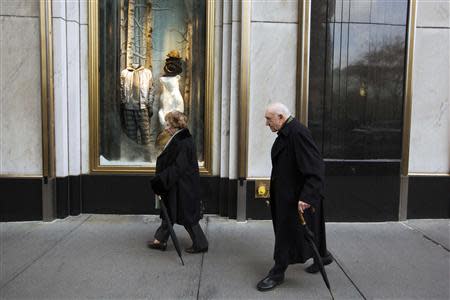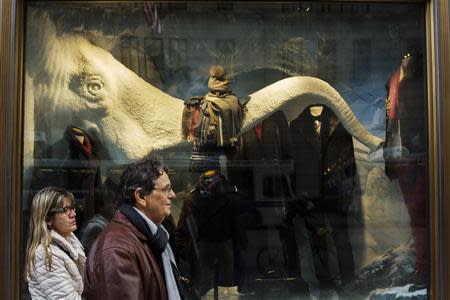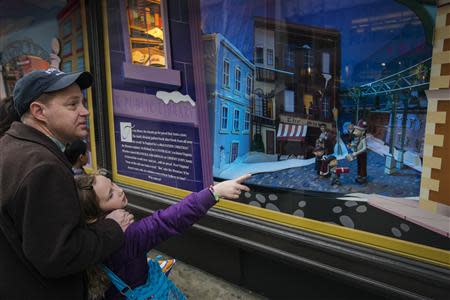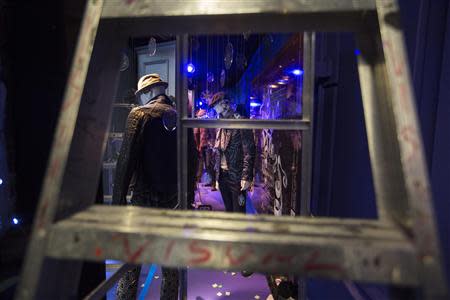Teen idols, apps: New York store windows want to 'retailtain' you
By Marina Lopes NEW YORK (Reuters) - Frosted fairies swoop between snow-covered trees as they guide a young boy from his bed to a whimsical forest with reindeer, angels and holiday magic. It's not a trailer for a Disney release. It's the Macy's flagship store in New York City, where six display windows have been transformed into an animated story. Paul Olszewski works year-round with a team of 100 full- and part-time animators, hair stylists, makeup artists, composers, musicians and copywriters to create the mechanical scenes. "It's like putting on a Broadway show," says the 47-year-old designer. "You're working with different pieces and different departments, but it all comes together on opening night" - usually the week before Thanksgiving. The window displays are the secret weapon of brick-and-mortar retailers, luring shoppers away from their computers at a time when ecommerce is more popular than ever. The cost for holiday displays is a tiny fraction of what retailers spend on television ads and other marketing, but they boost store traffic and generate buzz. While retailers in cities across the United States also deck themselves out for the season, none put on a bigger show than New York's storekeepers, who use everything from social media to 3-D projections that spill onto the facades of buildings to provide "retailtainment." And they keep upping the ante. In 2011, Barney's invited pop sensation Lady Gaga to unveil its holiday windows. This year Fifth Harmony, a sugary-sweet all-girl band, did the honors for Lord & Taylor. They could barely be heard above the shrieks of teenage girls, many drawn to the store for the first time by their celebrity idols. At Bergdorf Goodman's, near the Plaza Hotel, acrobats tethered to guy-wires "flew" out fourth-floor windows, sprinkling the crowd with glitter confetti as they made their way to the ground. SMALL INVESTMENT, BIG TRAFFIC The New York displays are built months in advance at off-site warehouses and then reassembled in November at the stores. Retailers also ship simpler, prepackaged window displays to their stores around the country. Companies contacted by Reuters declined to provide cost details, and they require designers to sign nondisclosure agreements. But Ron Friedman, retail practice leader at consulting firm Marcum LLP in Los Angeles, said many big retailers are spending about $300,000 to $500,000, less than in years past. "People are very cost-conscious today," said Friedman. Shoppers are expected to cut back spending by 2 percent, to $737.95, on average, from a year ago, according to the National Retail Federation. "We're in for a very tough holiday season, and all stores are planning on that and watching their budgets." Yet even a small investment in holiday decoration can have an exponential impact on flagship stores, which bring in heavy traffic. Saks Fifth Avenue's Manhattan store generates about 20 percent of the chain's entire sales, and Tiffany & Co's Fifth Avenue store accounts for 8 percent of its sales. Macy's rivals the Empire State Building as the most popular tourist site in the city, according to Elina Kazan, spokeswoman for the store, which is halfway through a $400 million renovation. Its holiday windows attract about 7,500 people an hour, she said, and shopper traffic often doubles, to as many 75,000 a day during the season. BRANDING PAYOFF Retailers are betting that the money and effort spent on windows pay dividends throughout the year. "It's not just to create that moment," said Deanna Francl, brand design leader for Gensler, a global design consulting firm based in San Francisco. "It's about how can I engage you with my brand so that when February comes around, I'll come back and see what you have for spring." Olszewski said more stores are installing high-tech window displays to try to interest a new generation of shoppers. "The physicality is what makes it special," said the Macy's designer, who incorporated a giant LED screen into his window to create an illusion of movement and depth to dazzle young viewers. "It's an experience you can't really get online." Prestige and the shoppers it lures are also at stake. Windows are covered in smoke-gray screens until the day of their unveiling and themes are kept secret. "We are all like cats in our turf," said Tom Beebe, who has designed more than 4,000 windows and been honored by the industry. His peers are often the toughest critics of the displays, he said. "They are the ones who are going to see the wires, or the threads or the pins, or the bow that's not going to be tied perfectly." CROSSOVER CHARM For many older shoppers, the holiday windows hold nostalgic appeal, but the opening performances and ephemeral charm also seduce younger people accustomed to Snap Chat and Instagram, apps that celebrate instant, short-lived images. Window designers at Saks paid tribute to social media this year, building its theme around a YouTube video of a yeti rumored to live on the roof of the store. An app allows spectators to flick customized snowflake projections onto the display windows. "It's a way to bridge the gap between online shopping and in-store retail experience," said Peter-Tolin Baker, another veteran designer of New York windows. Janice Gates Kelly's teenager daughter recently dragged her from Connecticut to the opening of the Lord & Taylor windows in the city because she wanted to see Fifth Harmony perform. "I do almost all my shopping online," Gates Kelly said. "When I come to these events, I think I should get here more with my kids, embrace the holiday." (Reporting by Marina Lopes; Editing by Jilian Mincer, Douglas Royalty and Prudence Crowther)
